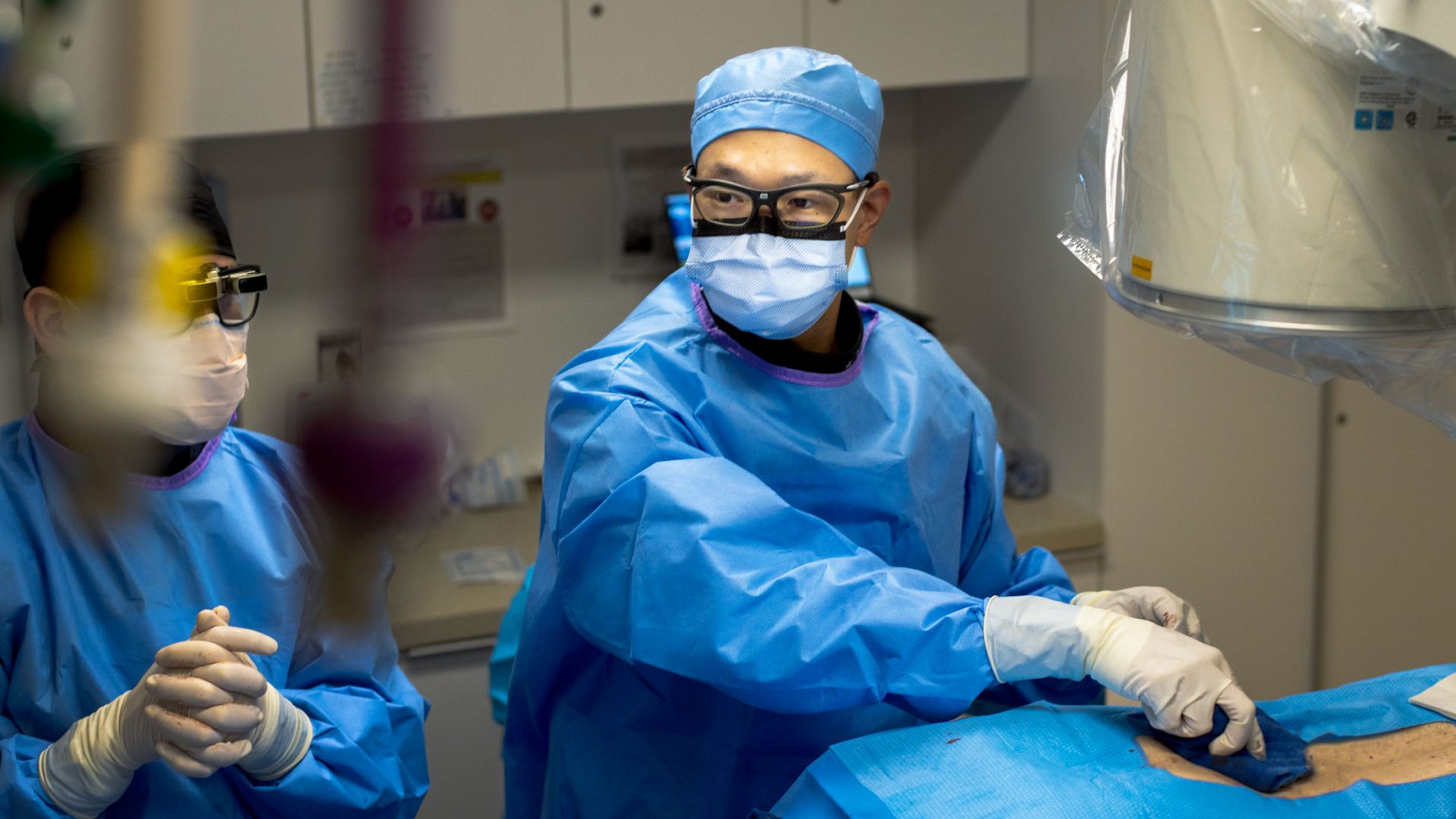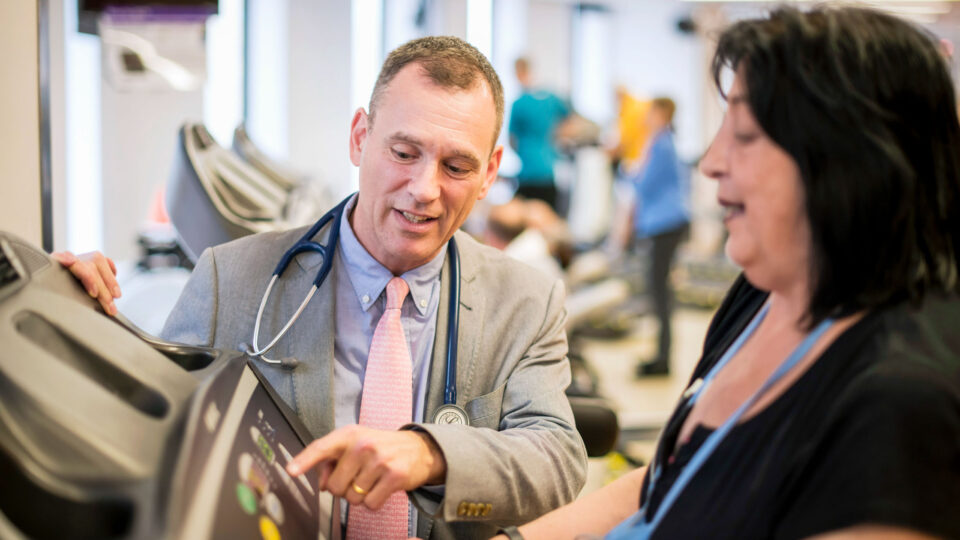Requiring only one tiny incision, a breakthrough technique for lumbar spinal stenosis (LSS) is minimizing pain and recovery times for patients. Richard Lau, MD, a clinical assistant professor of rehabilitation medicine, is helping to pioneer the minimally invasive procedure, providing the treatment in the outpatient setting without general anesthesia in under one hour.
“Minimally invasive lumbar decompression provides immense value. Patients often have little to no pain and fast recovery.”
Richard Lau, MD
“Minimally invasive lumbar decompression provides immense value. Patients often have little to no pain and fast recovery,” Dr. Lau says. “For carefully selected patients with LSS, this technique offers an exciting opportunity to dramatically improve their troublesome symptoms.”
The MILD Procedure
The MILD Procedure was initially developed in 2005, Dr. Lau explains, to help treat cancer patients who developed spinal stenosis but were unable to tolerate intensive surgery due to comorbidities.
In recent years, the technique has been adapted to treat select patients with LSS. Based on positive results from the MiDAS ENCORE study, the U.S. Centers for Medicare and Medicaid Services approved nationwide Medicare coverage of the procedure in 2017.
“Since then, we’ve seen a big increase in demand,” Dr. Lau says.
Backed by Robust Evidence
Long-term follow up data suggest that 88 percent of patients with symptomatic LSS who undergo the procedure may be spared from open lumbar decompression surgery for at least 5 years, reflecting durable outcomes. Patients also report significant pain relief, functional improvement, and reduced pain medication usage.
“Although open surgical decompression is associated with good outcomes in most patients, there may be potential complications,” Dr. Lau explains. “These can include local tissue trauma, persistent postoperative pain, and nerve damage.”
There are additional concerns when treating older patients, Dr. Lau says, who often present with multiple comorbidities. Traditional spine surgery typically involves general anesthesia, and may involve a hospital stay and recovery period.
“As a minimally invasive option, MILD represents a safe and effective alternative to open spine surgery—especially for select elderly patients,” Dr. Lau says. “The procedure requires no stitches, causes minimal discomfort, and has a strong safety profile, similar to that of an epidural steroid injection.”
Determining Patient Candidacy
To assess if a patient is a candidate, it is important to establish the diagnosis and etiology of LSS, Dr. Lau explains. This includes a detailed history and physical examination, with etiology primarily determined with imaging studies.
“The most consistent finding of symptomatic LSS is the presence of neurogenic claudication, which may involve little or no pain at rest or when sitting or lying down,” Dr. Lau says. “Upon standing or walking, however, these patients experience back, buttock, and/or leg pain and report a progressive decline in their standing time and walking distance.”
Dr. Lau encourages appropriate patients to undergo MILD as early as needed rather than waiting until they are at an advanced age, especially given that it’s covered by Medicare and some private payers.
If providers are unsure whether a patient may be a suitable candidate, referring them for consultation is highly recommended. “This intervention can significantly impact patients’ quality of life,” Dr. Lau says.






